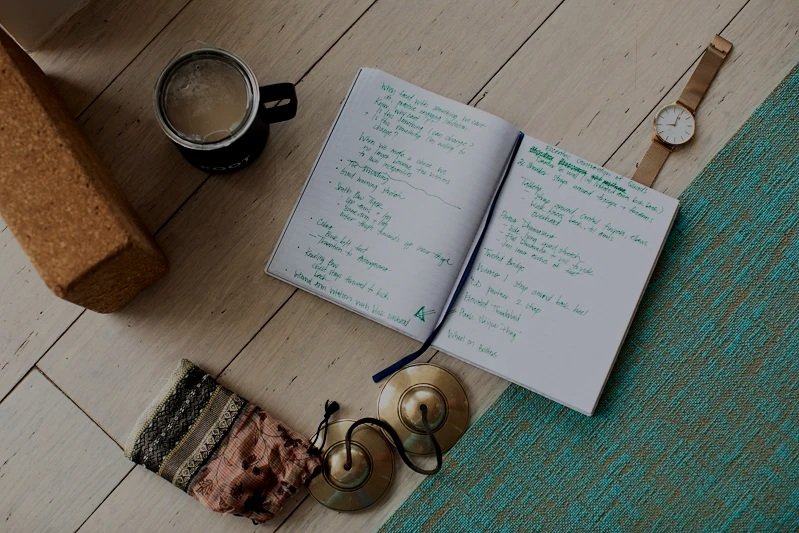Air travel has a way of pulling us up and out.
You don’t just land when the plane touches down.
You land when your awareness returns to your body.
This week, let grounding be less about technique,
and more about remembering where you are.
Check out the link for the full practice.
Grounding has become one of those wellness words we toss around constantly — as if touching the earth or stepping barefoot into the grass is a magic pill to settle our nervous system.
Yes: the earth does have a resonance.
And yes: standing barefoot on the earth does do something.
It brings us into presence, into a quieter version of ourselves where we can actually feel what’s happening in our internal world.
But here’s the truth we don’t talk about enough:
Grounding isn’t location-dependent.
It’s presence-dependent.
It brings us into presence, into a quieter version of ourselves where we can actually feel what’s happening in our internal world.
Mundanely Magical Mondays: Remembering Yourself in Community
The holidays are sold to us as a time of perfect togetherness:
cozy tables, effortless conversations, everyone on their best behavior.
Real life is softer and messier than that.
So bring your boundaries with you! Because boundaries in community aren’t about closing your heart.
They’re about staying with yourself while you’re with others.
Click the link for a short and simple practice.
'tis the the season of protecting your peace
The holidays often mean travel — planes, trains, long car rides, or visiting friends and family. While these trips bring connection and joy, they also come with a cost: overstimulation, stress, and energy that can feel scattered before you even arrive. This is where your boundaries matter most. Just a few mindful practices can help you arrive rested, centered, and still yourself — even in the midst of chaos.
Read MoreThe holidays have a way of pulling us into their current — a swirl of rituals, recipes, and expectations that seem to have always been there. We light the candles, bake the cookies, make the long drives, or say “yes” to one more gathering, all in the name of tradition.
But somewhere between the nostalgia and the noise, it’s easy to lose the thread of what those traditions were meant to hold: connection, meaning, and joy.
Read MoreThis time of year has a way of pulling us in every direction — gatherings, decisions, lists, expectations.
It’s so easy to get swept up in the momentum of it all that we forget the most essential part of the season: our own presence.
This week we have a meditation that is an invitation to return home — not to a place, but to the quiet center within you that’s always waiting.
Read MoreThe holidays can be beautiful — and also a lot. ✨
That’s why this is The Season of Protecting Your Peace.
Protect your time. Protect your energy. Protect your heart.
You don’t have to say yes to everything to make the season meaningful.
Are you tired of the well-trodden paths that the typical Inca Trail treks follow? What if there was a way to explore the Andes, experience its majestic landscapes, and connect with its communities without the crowds? The 2025 Peru Trekking Adventure offers something truly unique: an exclusive, Indigenous-led trail that takes you off the beaten path to some of Peru’s most hidden treasures.
Read MoreTransitions take time—just as winter gradually gives way to spring. A flower cannot be rushed to bloom before its time.
The same is true for life’s transitions. We often long to move through change quickly, seeking stability on the other side. But transformation unfolds at its own pace.
This week, we’ll explore a 4-minute meditative practice focused on the art of arriving.
Read MoreWhile Machu Picchu is one of the most iconic destinations in the world, how many people can say they saw it from a rare, hidden vantage point before they even set foot in the Lost City of the Incas? On the 2025 Peru Trekking Adventure, you’ll be one of the few lucky trekkers to witness Machu Picchu from an entirely unique perspective—an experience that’s sure to stay with you forever.
Read MoreSpring is just around the corner, bringing with it unpredictable weather.
One day may be bright and warm, while the next brings rain—or even snow.
Much like the shifting seasons, life’s transitions can be challenging and uncertain.
Whether you're preparing to send a child to college, navigating the end of a relationship, mourning a loss, or simply shifting from work mode to home life, transitions have a way of shaking our balance.
This month, we’ll explore meaningful ways to navigate and embrace these changes.
Read MoreHave you ever noticed how your breath reacts when you step into the cold—or immerse yourself in cold water?
Your body instinctively takes a sharp, deep inhale and quickly exhales.
As we transition from winter into the busy energy of spring and summer, our breath often follows suit—becoming faster, shorter, and more shallow.
But what if we slowed down and embraced this shift with intention?
The practices below are designed to support slow, full, and present breathing, helping you move through this transition with ease.
Read More






